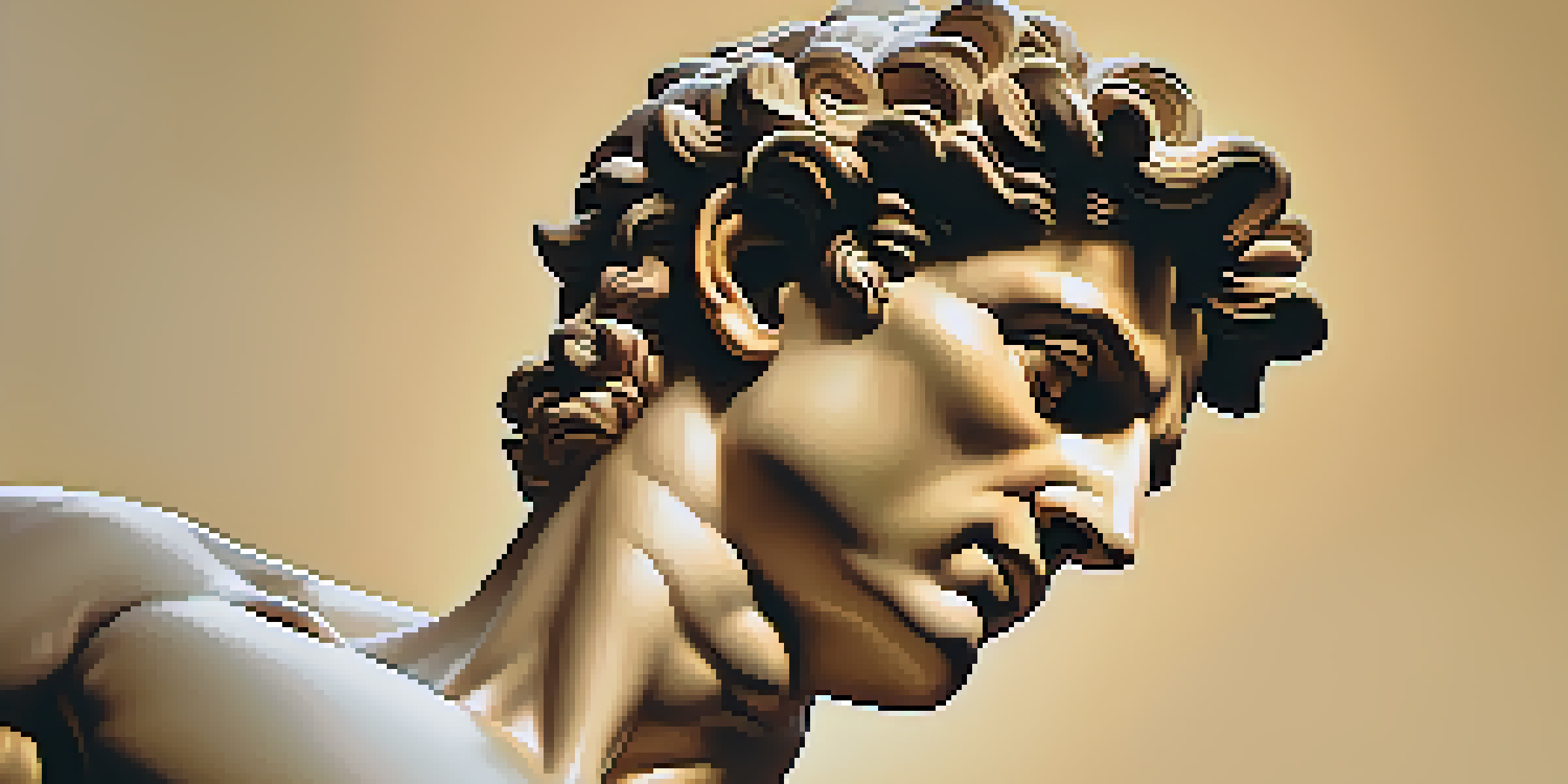Michelangelo: The Master Carver of Renaissance Sculpture

Introduction to Michelangelo's Artistic Journey
Michelangelo Buonarroti, born in 1475, was a central figure of the Renaissance. He didn't just create art; he redefined it, pushing boundaries in sculpture, painting, and architecture. His passion for sculpting emerged early, fueled by a natural talent and a rigorous apprenticeship. This dedication laid the foundation for a career that would leave an indelible mark on art history.
The Philosophy Behind Michelangelo's Sculptures
At the heart of Michelangelo's work was a deep understanding of human emotion and anatomy. He believed that each block of marble contained a figure waiting to be released, a philosophy that guided his carving process. This belief in the 'liberation' of stone allowed him to infuse life into his sculptures, making them feel almost alive. His ability to convey complex emotions through stone set him apart from his contemporaries.
Michelangelo's Artistic Revolution
Michelangelo redefined art during the Renaissance through his groundbreaking approaches in sculpture, painting, and architecture.
Notable Sculptures: David and the Pietà
Among Michelangelo's most celebrated works are the 'David' and the 'Pietà.' The 'David,' a towering figure of biblical heroism, showcases his mastery of human anatomy and proportion. In contrast, the 'Pietà' captures a tender moment between Mary and Jesus, reflecting profound sorrow and tenderness. These pieces not only highlight his technical skill but also his emotional depth as an artist.
Innovative Techniques in Marble Carving
Michelangelo employed innovative techniques that transformed the art of marble carving. He often used a method called 'direct carving,' where he worked directly on the stone without preliminary sketches. This approach allowed for spontaneity and a more organic connection to the material. His unique understanding of light and shadow further enhanced the realism of his sculptures, creating a lifelike quality that continues to captivate viewers.
Emotional Depth in Sculptures
His sculptures, like 'David' and 'Pietà,' exemplify a mastery of human anatomy and the ability to convey complex emotions.
Influence of Classical Antiquity on His Work
Classical antiquity played a significant role in shaping Michelangelo's artistic vision. He drew inspiration from ancient Greek and Roman sculptures, emulating their idealized forms and proportions. This connection to the past allowed him to blend classical beauty with emotional intensity, creating a unique style that resonated with the Renaissance ideals. His works often reflect a dialogue between the past and the present, showcasing his reverence for classical art.
Michelangelo's Legacy in Modern Sculpture
The impact of Michelangelo's work extends far beyond his lifetime. His innovative techniques and emotional depth continue to influence modern sculptors today. Artists such as Henry Moore and Alberto Giacometti have cited Michelangelo as a source of inspiration. The principles he established in form and technique are still taught in art schools, ensuring his legacy endures for future generations.
Enduring Influence on Modern Art
Michelangelo's innovative techniques and emotional expressions continue to inspire contemporary sculptors and art education.
Challenges Faced by Michelangelo
Despite his genius, Michelangelo faced numerous challenges throughout his career. He often contended with the expectations of patrons who had grand visions that sometimes clashed with his artistic instincts. Additionally, the immense physical demands of carving large sculptures took a toll on his health. Yet, through perseverance and a relentless pursuit of perfection, he overcame these obstacles, solidifying his reputation as a master artist.
Conclusion: The Enduring Appeal of Michelangelo
Michelangelo's work remains a beacon of artistic excellence and emotional depth. His ability to capture the human experience in stone resonates with audiences even today. As we explore his masterpieces, we are reminded of the power of art to transcend time and connect us to our shared humanity. Michelangelo not only carved marble; he carved his name into the annals of art history, ensuring that his legacy will never fade.